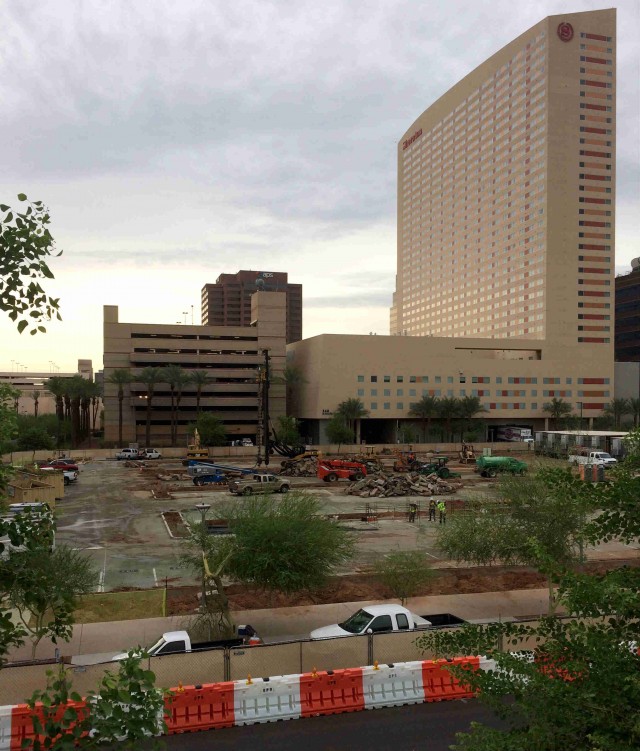 While the construction crew was busy preparing to break ground on the new ASU Sandra Day O’Connor College of Law, we were brainstorming—finding new places for 116 trees that surround the site plan on First Street between Taylor and Polk streets.
While the construction crew was busy preparing to break ground on the new ASU Sandra Day O’Connor College of Law, we were brainstorming—finding new places for 116 trees that surround the site plan on First Street between Taylor and Polk streets.
In an effort to both save mature trees as well as provide more shade and beauty to other areas of the Downtown core, the Downtown Phoenix Partnership — in collaboration with ASU, DPR Construction and the City of Phoenix — will save dozens of these trees, placing them in new homes around the city. Forty-three trees have been boxed and moved to the SPACE_BETWEEN—the vacant lot activation project on First Street that’s scheduled to debut this fall—where they await the cooler planting season.
Once weather permits, many of the trees will be transplanted to vacant tree wells along Adams Street between Second Street and Second Avenue. The remaining trees will be used for the SPACE_BETWEEN activation project; replace existing Palo Brea trees along Adams Street, which don’t fare well in tree wells and have fragile branches that often break and cause property damage; and be placed in empty tree wells near the former Matador building.
Additionally, DPR Construction plans to save 32 Palo Verde and Mulga varieties that line Taylor and Polk streets, leaving them in place as part of the finished project.
These trees, each of which would cost between $1,000 and $2,000 to buy new, have had three years to mature—growing and providing shade to passerby. And though it may seem of nominal importance, shade is a simple yet essential feature of a pedestrian- and bicyclist-friendly street.
And if we’re to ever to become one of America’s most walkable cities as was recently suggested by Time Magazine — then shade as well as public transportation, urban development, residential amenities and more — must be a top priority in the coming years.


